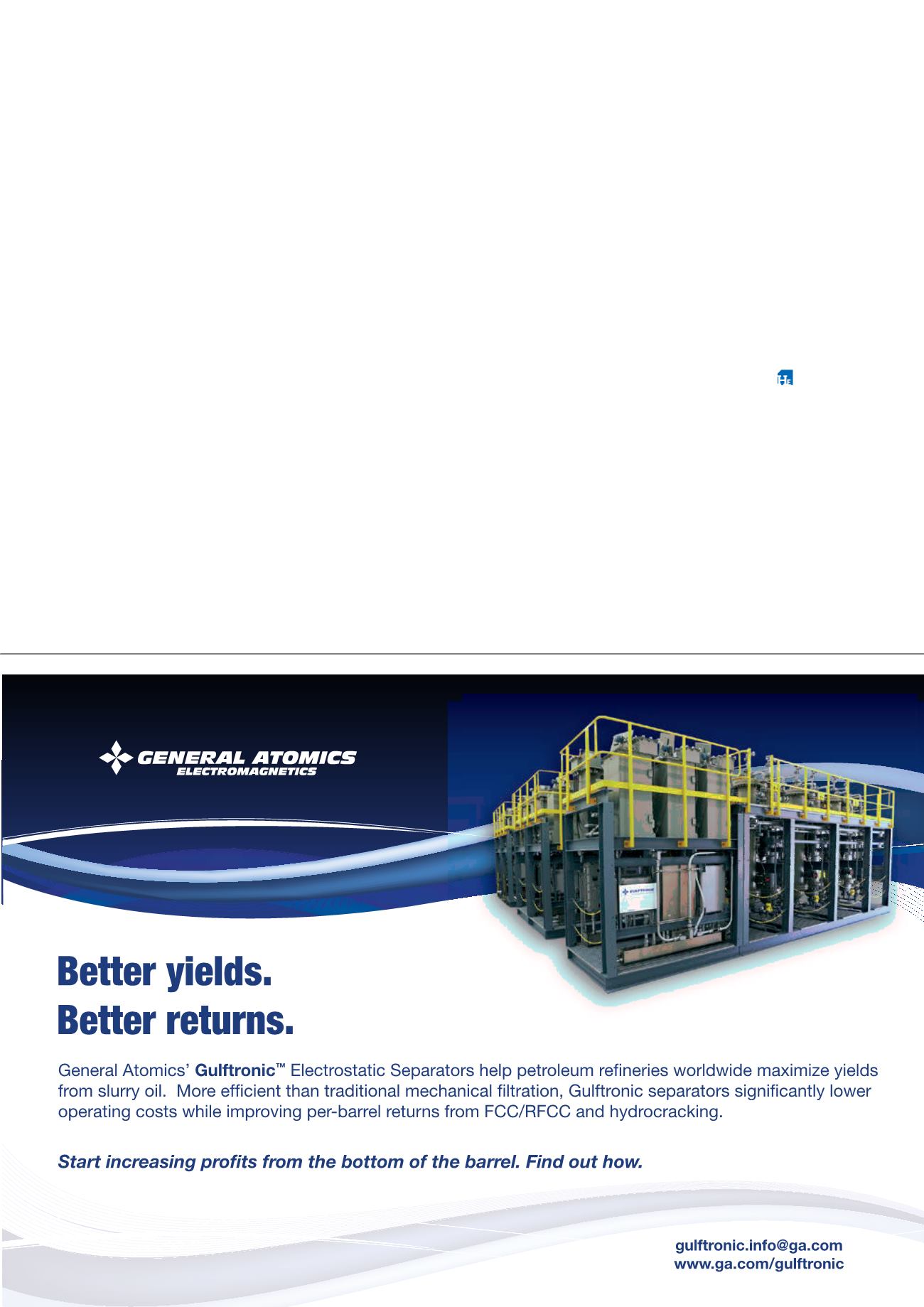
Based on the example data above, Refinery A can
realise the following annual savings potential:
n
US$3.5 million/y additional product value increase –
US$40 000 process cost + US$3.2 million/y disposal
cost savings = US$6.7 million annual savings.
Catalyst savings might not be as valuable for a residual
unit, but would still be significant. Individual cases involving
deep residual cracking benefits should be calculated based
on a thorough knowledge of the RFCC unit feed, operating
conditions, catalyst characteristics, etc. It is important to
note that smaller catalyst particles returned to the unit have
an inherently larger surface to volume ratio, and could have
a considerably higher residual cracking activity than the
larger equilibrium catalyst held in the unit.
Other cases with slurry oil catalyst concentrations of
2000, 3000 and 4000 ppm and slurry uplift of US$2/bbl
have been shown to generate higher profit drivers for
a refiner. Savings from the use of the electrostatic
separator and particle sensors to maintain process clarity
for these concentrations range from approximately
US$4.5 - 11 million/y.
Conclusion
Online analysis of clarified slurry oil to maintain a high
grade of clarity to meet current market options can save
refineries without a catalyst removal option millions of
dollars a year. In many cases, meeting client demands for
clarified slurry oil in carbon black and fuel oils can realise
as much as US$1 million/month in revenue generation.
Deploying a reliable electrostatic separation technology
combined with real time, online monitoring techniques
provides operators with the confidence they are meeting
market specifications to improve profit potential.
The removal of FCC/RFCC slurry oil solids to low levels:
n
Permits clarified oil to be used in higher value
applications, yielding approximately US$2 - 4/bbl.
n
Reduces or eliminates the need for the disposal of
hazardous waste from slurry oil holding tank sludge.
n
Reduces fresh catalyst make-up costs through FCC
catalyst recycling.
n
Reduces additive costs by eliminating the need for
chemical settling aids.
n
Allows costly blending of higher grade products to be
used for other conversions at a higher profit.
References
1. GUERCIO, V. J., 'US Producing, exporting more slurry oil', Oil & Gas
Journal, 4 October 2010.
2. Platts, Methodology and Specifications Guide, 'Petroleum Product
& Gas Liquids: US Caribbean and Latin America', January 2012.
3. MINYARD, W. F., and WOODSON, T. S., 'Upgrade FCC Slurry Oil with
Chemical Settling Aids', World Refining, November/December
1999.
4. MOTAGHI, M., SHREE, K., and KRISHNAMURTHY, S., Anode Grade
Coke from Traditional Crudes, PTQ, Q2, 2010.
5. ELLIOTT, J. D., 'Impact of Feed Properties and Operating Parameters
on Delayed Coker Petcoke Quality', presented at the ERTC 2008
Coking and Gasification Conference.
6.
Archive/Optimize-value-from-FCC-bottoms.html.


